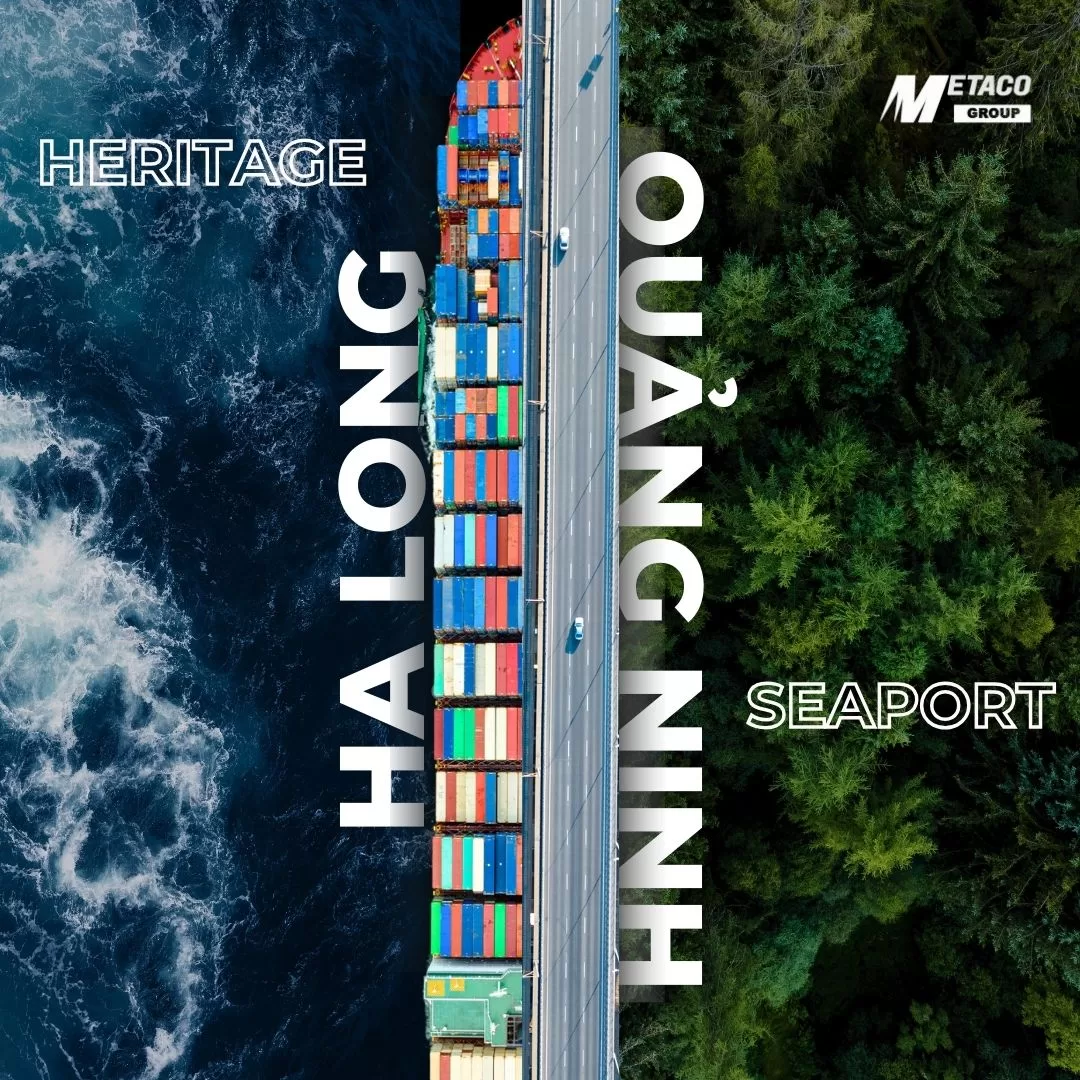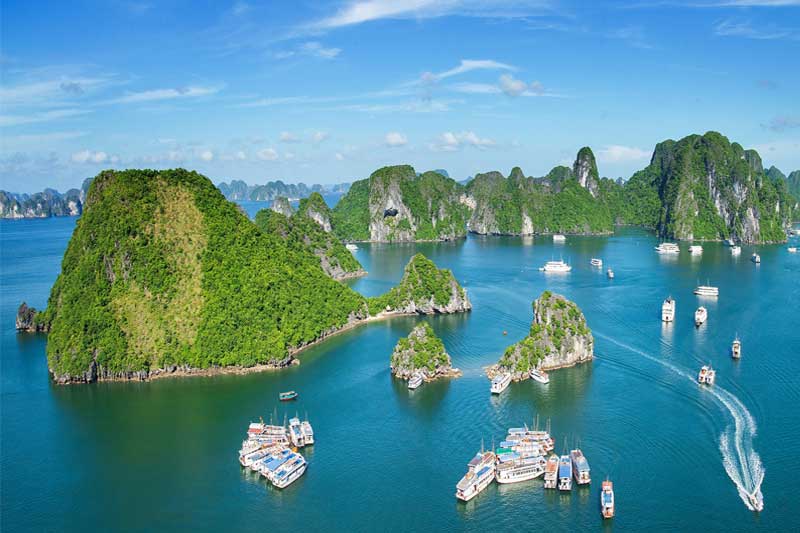Quang Ninh, home to the world-renowned UNESCO World Heritage site Ha Long Bay, is not only an attractive tourist destination but also a key seaport development hub in Northern Vietnam. Over the years, Quang Ninh has consistently invested in infrastructure and transportation to enhance its international standing, while fostering the development of both its marine economy and tourism. This unique convergence of natural beauty and economic potential positions Quang Ninh as a highly accessible and promising international destination.

International Gateway
Quang Ninh serves as a gateway for the northern economic region of Vietnam and plays a central role in the “Two Corridors, One Belt” economic cooperation between Vietnam and China. The province is also a crucial player in the expanded Gulf of Tonkin regional cooperation, linking parts of Southeast Asia with China. In recent years, Quang Ninh has focused on innovative and sustainable development, leveraging private and public resources to build an interconnected transportation system that links roadways, seaports, and airports.

One of the key infrastructure milestones is the Van Don International Airport, which significantly enhances Quang Ninh’s connectivity with international tourist markets. Charter flights from various countries now bring visitors directly to the province, opening up new tourism opportunities. In addition, the Ha Long International Passenger Port offers world-class services, facilitating the docking of large cruise ships and welcoming thousands of tourists eager to explore the wonders of Ha Long Bay.
Thanks to the modern transportation network, Quang Ninh has never been easier to explore. International travelers can now arrive directly by air or sea, while independent tourists can easily navigate the province without the need for organized tours, experiencing the region’s natural and cultural beauty at their own pace.
Potential of Seaport
Ha Long Bay, with its sheltered waters and calm weather, serves as one of Northern Vietnam’s key marine gateways. The bay’s dense network of natural channels and minimal sedimentation create ideal conditions for the development of seaports, particularly deep-water ports. This has allowed Quang Ninh to establish itself as a strategic maritime hub.

Cai Lan Port, the deepest port in Northern Vietnam, plays a vital role in the region’s international trade. Located near Cua Luc, Cai Lan benefits from deep waters and a channel that remains largely free from sediment buildup, with depths reaching -13 meters at the berths, allowing it to accommodate ships with a capacity of over 70,000 tons. The port’s seven berths enhance its cargo handling capacity, significantly contributing to the import and export activities of the region. Its strategic position facilitates greater international trade and bolsters Quang Ninh’s role as a key player in Vietnam’s marine economy.
Sustainable Development Vision
In its pursuit to become a reputable international destination, Quang Ninh has focused on diversifying its tourism offerings, developing high-quality products, and cultivating a globally integrated tourism culture. The seamless integration of cultural and natural heritage with modern port infrastructure provides Quang Ninh with a unique competitive edge, offering growth opportunities in both the tourism and maritime sectors.
The province continues to innovate by offering unique and diverse tourism experiences, such as eco-tourism and cultural heritage tours, combined with recreational activities in Ha Long Bay. These efforts not only enhance the visitor experience but also raise Quang Ninh’s profile as a world-class tourist destination.
Overall, Quang Ninh, with Ha Long Bay as its iconic symbol, represents not only Vietnam’s natural beauty but also its potential for sustainable port development and marine economic growth. The convergence of heritage and seaports has given Quang Ninh an undeniable competitive advantage, making it a dream destination for international tourists and a critical player in Vietnam’s marine economy.
Shipping and the Role of Anti-Fouling Paint in the Marine Economy
In the development of the marine economy, particularly in the shipbuilding and maritime transport sectors, ensuring operational efficiency and protecting vessels is crucial. Ships operating in saltwater environments often face the challenge of marine organisms, known as biofouling, attaching to their hulls. This not only reduces the ship’s speed, and increases fuel consumption, but also damages the hull’s structure, leading to higher maintenance costs.

Anti-fouling paint has emerged as an optimal solution for the maritime industry. This specialized paint is designed to prevent marine organisms from adhering to the hull. Thanks to advanced technology, anti-fouling paint helps ships maintain stable speeds, reduce fuel consumption, protect the hull from environmental damage, extend the lifespan of vessels, and significantly cut maintenance costs.
The development of the shipbuilding and maritime transport industries heavily depends on such technical advancements. Major shipping companies prioritize using anti-fouling paint to optimize operations and safeguard vessels from natural elements, thereby driving the growth of the marine economy robustly and sustainably.
Nippon Paint Marine, with its advanced anti-fouling paint, is now officially distributed by Metaco. It offers optimal protection for ships and offshore structures, enhances performance, and significantly reduces maintenance costs.
Mai Hoang
_
METACO Group is an authorized distributor of Nippon Marine with professional construction services. With a team of experienced technicians, METACO is committed to providing optimal protection solutions for your ship.
Find the product here or contact us at:
Facebook: Metaco Group
Website: https://metaco.vn
Email: info@metaco.vn
Address: No. 5 Ly Tu Trong, Hong Bang District, Hai Phong City
